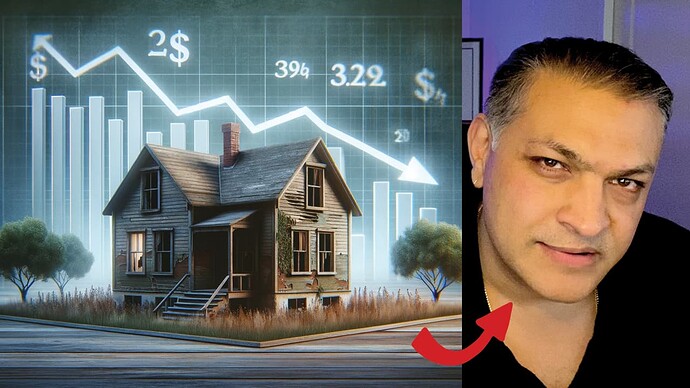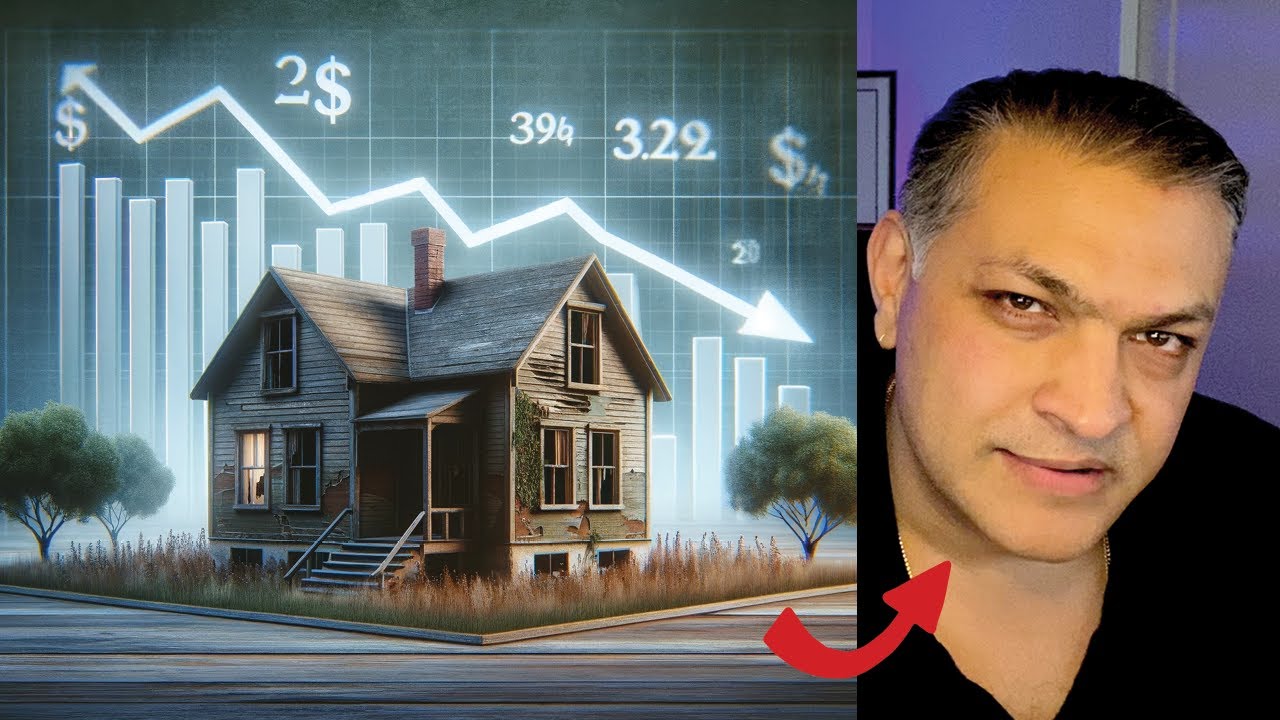Golden Goose or Sitting Duck? Decoding Land-to-Asset Ratio
Are you standing at the crossroads of property investment, wondering if your next move will lead to a pot of gold or a financial sinkhole? Welcome to “Golden Goose or Duck? Decoding Land-to-Asset Ratio,” a guide designed exclusively for property investors like you, who aim to navigate the complex world of real estate with confidence and precision.
In the realm of property investment, the land-to-asset ratio emerges as a pivotal metric, often overlooked yet crucial in determining the true value and potential of your investment. But what is this ratio, and why does it matter so much in your property investment journey?
What is the land-to-asset ratio?
In a simpler form, the land-to-asset ratio is a financial metric that indicates what portion of a property’s total value is attributed to the land itself, rather than the buildings or structures on it. This ratio is especially important in real estate, where the value of a property is often significantly influenced by the value of the land.
For example, in a property where the total value is heavily influenced by the land (such as in prime locations where land is scarce and highly valued), the land-to-asset ratio would be high. Conversely, in areas where the value is more in the buildings or improvements made on the land (like in areas with less expensive land but high-value structures), the land-to-asset ratio would be lower.
This ratio helps in understanding the intrinsic value of the land in comparison to the overall investment in the property, and is a key consideration in real estate investment and valuation.
The Essence of the Land-to-Asset Ratio
Think of property investment like baking a cake, where success hinges on the quality and proportion of ingredients. The land-to-asset ratio is similar—it measures the land component against your property’s total value. Grasping this ratio unveils the real potential for capital growth, steering you away from investments that resemble money pits more than treasure chests.
How to Determine the Land-to-Asset Ratio
Before diving into the intricacies of the Land-to-Asset Ratio, you’ll need to gather some information about your property. Specifically, your latest Land Tax notice and Council Rates notice will be essential. If you don’t have these documents, don’t worry – there are other ways to figure out your numbers.
Step 1: Finding the Land Value
The first step is to determine the land value of your property. This isn’t the same as the purchase value; you’re looking for the value of the land alone. You can find this on your council rates or land tax notice, which will list the unimproved land value.
Alternatively, calculate it by finding the average land value per square meter in your area and multiplying by the size of your property. If all else fails, look at the replacement cost of the building on your insurance policy and subtract this from the purchase price.
Step 2: Establishing the Purchase or Current Value
Next, you’ll need to know the current market value of the property. This could be the price you plan to purchase it for or, if you already own it, the price you could sell it for today. Many websites provide desktop valuations which, while not exact, are sufficient for this exercise.
Step 3: Calculating the Ratio
Once you have both values, divide the land value by the purchase or selling price and convert it to a percentage. This percentage is your Land-to-Asset Ratio.
The land-to-asset ratio in the context of real estate refers to the proportion of a real estate company’s total assets that is represented by the value of the land it owns. This ratio is particularly significant in the real estate industry, as land is a fundamental asset in this sector.
To calculate the land-to-asset ratio for a real estate company, you divide the value of the land the company owns by the total value of all its assets. This includes not just land, but also buildings, equipment, cash, and any other assets.
For example, if the current value of a property is $500 million, and out of that, land constitutes $150 million, the land-to-asset ratio would be:
Land-to-asset ratio = Value of land/total assets = $150 Million/$500 Million = 0.30 or 30%
Why the Land-to-Asset Ratio Matters
-
Primary Price Growth Driver: Land tends to appreciate over time, while buildings depreciate. A higher land component generally suggests greater potential for capital growth.
-
Investment Quality Indicator: A high ratio can signal a better quality investment with more room for land value appreciation and redevelopment possibilities.
-
Depreciation Risks: A lower ratio might mean a larger part of your investment is susceptible to depreciation, which could negatively impact future value.
Understanding the Ratio with Examples
Let’s compare four properties, each priced at $750,000, with varying land-to-asset ratios: a house and land package, an apartment, a townhouse, and a single-family home. Ideally, you’d want a property with at least a 50% land component. A 60%-70% ratio would be even better.
Emotional Bias and Investment Decisions
The Land-to-Asset Ratio also serves as a guard against emotional biases. Instead of being swayed by a property’s superficial features, you can make objective decisions based on solid financial metrics.
Urban vs. Regional Investments
The location of your property significantly influences the Land-to-Asset Ratio. In city centers or established suburbs where land is scarce, the ratio can be high. In contrast, regional properties might have a lower land value compared to the structure, hinting at lesser appreciation potential.
Older Properties vs New Developments
An older property in a developed area might have a high land-to-asset ratio, indicating a good redevelopment opportunity. Conversely, new developments may start with a lower land value, but this can increase as the area matures.
The Renovation and Development Perspective
For those looking to renovate or develop a property, it’s crucial to understand the current land value, the dwelling’s value, and the projected value post-renovation or development. This helps in avoiding overcapitalization and focusing on enhancing the value of the property.
Why Not Just Buy Land? Understanding the Drawbacks
When considering property investment, you might wonder why not just invest in land itself, since the land component typically appreciates over time. It seems like a simple approach to maximize land value, but this strategy comes with significant drawbacks. Let’s delve into why buying vacant land might not always be the best investment choice.
1. Lack of Rental Income
One of the primary drawbacks of investing in vacant land is the absence of rental income. Unlike properties with buildings or structures that can be rented out, vacant land typically does not generate any immediate income. This means you miss out on a steady cash flow, which is a significant aspect of property investment returns.
2. Non-Deductible Debt
Another critical factor to consider is the nature of debt associated with vacant land. In many cases, the interest on a loan used to purchase vacant land is not tax-deductible. This is in contrast to property with buildings, where the debt interest can often be deducted against rental income, reducing your taxable income and providing a tax benefit.
3. Lack of Scarcity
The scarcity factor plays a crucial role in property value appreciation. Developed properties, especially in urban areas, often become more valuable over time due to their limited availability. Vacant land, on the other hand, may not always have this scarcity advantage. Especially in less developed or rural areas, the abundance of available land can mean that your investment doesn’t appreciate as quickly or as significantly.
4. Development Challenges
If you plan to develop the land in the future, there are numerous challenges and costs involved. These include obtaining planning permits, paying for construction, and managing the development process. These factors can add complexity and additional risk to your investment.
5. Market Dynamics
The real estate market dynamics for vacant land can differ significantly from those for developed properties. The demand for land is often more volatile and can be influenced by different factors than the housing market. This volatility can add an element of unpredictability to your investment.
Limitations of the Land-to-Asset Ratio
No single ratio can capture the full picture of an investment’s potential. The Land-to-Asset Ratio is a powerful tool, but it’s not infallible. It needs to be considered alongside other factors, such as the specific demand and supply dynamics of the location.
Now, as you stand equipped with this newfound knowledge, remember that the journey of property investment is nuanced and ever-evolving. The land-to-asset ratio is a compass, guiding you towards informed decisions, but it’s your strategy, research, and instincts that will ultimately lead you to success. Whether you’re a seasoned investor or just starting, continue to seek knowledge, understand market trends, and evaluate each opportunity with a critical eye.
Next Step?
Ready to take your property investment journey to the next level? Sign up for free at Lead Investors and join a community of like-minded individuals who are shaping their financial futures through savvy real estate investments. Don’t just dream about success; be proactive in your pursuit of it.
Sign up now, and let’s embark on this exciting journey together.



